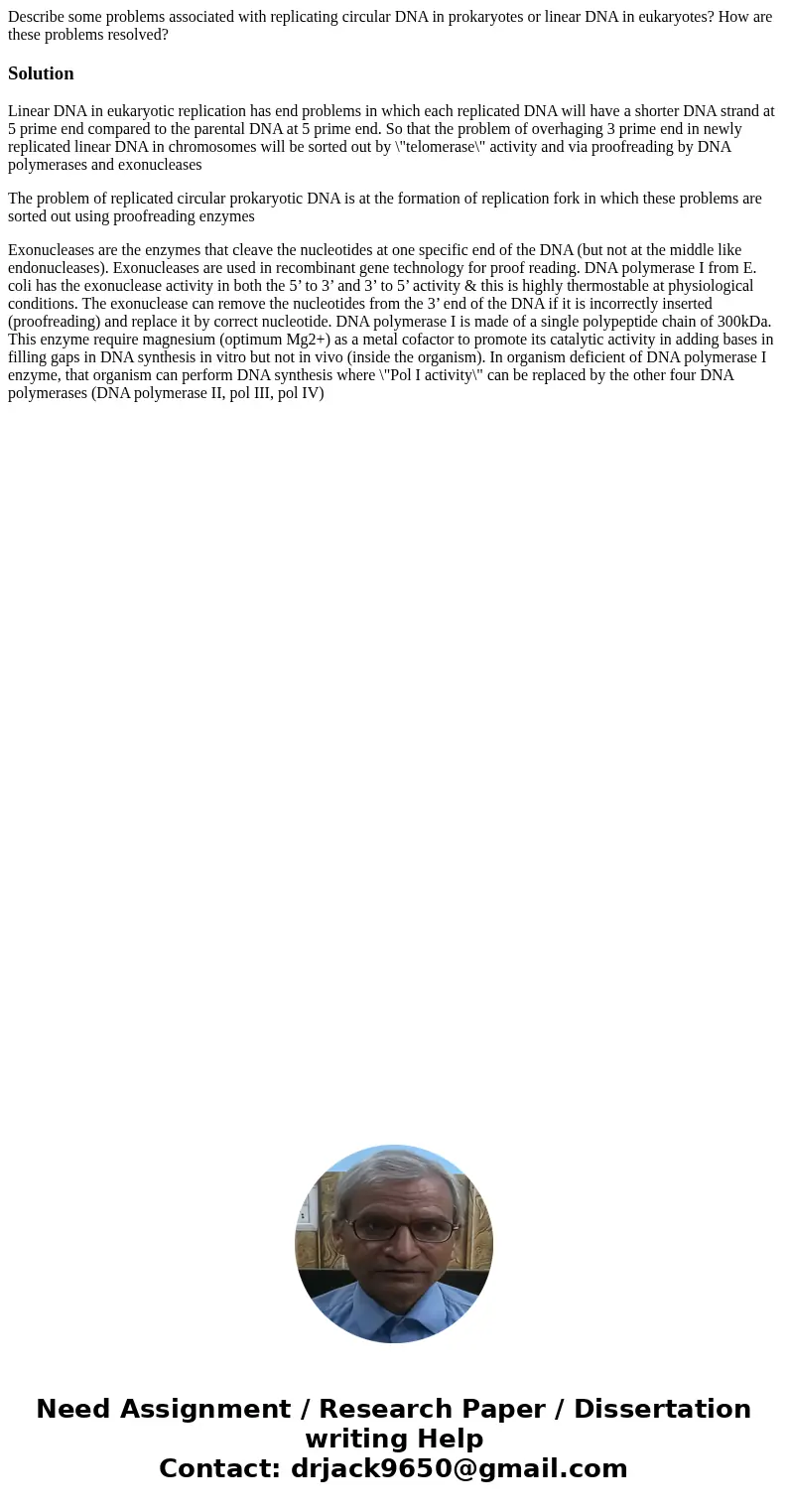Describe some problems associated with replicating circular
Describe some problems associated with replicating circular DNA in prokaryotes or linear DNA in eukaryotes? How are these problems resolved?
Solution
Linear DNA in eukaryotic replication has end problems in which each replicated DNA will have a shorter DNA strand at 5 prime end compared to the parental DNA at 5 prime end. So that the problem of overhaging 3 prime end in newly replicated linear DNA in chromosomes will be sorted out by \"telomerase\" activity and via proofreading by DNA polymerases and exonucleases
The problem of replicated circular prokaryotic DNA is at the formation of replication fork in which these problems are sorted out using proofreading enzymes
Exonucleases are the enzymes that cleave the nucleotides at one specific end of the DNA (but not at the middle like endonucleases). Exonucleases are used in recombinant gene technology for proof reading. DNA polymerase I from E. coli has the exonuclease activity in both the 5’ to 3’ and 3’ to 5’ activity & this is highly thermostable at physiological conditions. The exonuclease can remove the nucleotides from the 3’ end of the DNA if it is incorrectly inserted (proofreading) and replace it by correct nucleotide. DNA polymerase I is made of a single polypeptide chain of 300kDa. This enzyme require magnesium (optimum Mg2+) as a metal cofactor to promote its catalytic activity in adding bases in filling gaps in DNA synthesis in vitro but not in vivo (inside the organism). In organism deficient of DNA polymerase I enzyme, that organism can perform DNA synthesis where \"Pol I activity\" can be replaced by the other four DNA polymerases (DNA polymerase II, pol III, pol IV)

 Homework Sourse
Homework Sourse